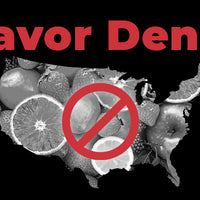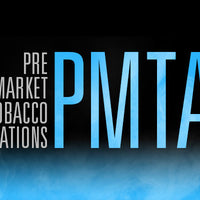Last year, the vaping industry received more serious attention from scholars, politicians, public health officials and media outlets than ever before. Here is an overview of the major news stories and law changes surrounding e-cigarettes in 2015.
A Timeline of 2015 E-cig News and Regulations
February 2015:
- The FAA officially prohibited e-cigs from checked luggage on flights throughout the U.S. after the International Civil Aviation Organization reported incidents of fires started by overheated batteries.
March 2015:
- The FDA hosted its second workshop about e-cigs focusing on toxicology and user demographics. This workshop was part of a series to educate the medical community in the wake of the new Deeming Regulations for vape products.
- The California Department of Health funded a $75 million campaign against the vaping industry called StillBlowingSmoke. In response, the website NOTBlowingSmoke.org emerged to counter erroneous anti-vaping claims.
August 2015:
- Public Health England unveiled its evidence-based report on e-cigarettes, which attributed declining smoking rates in the U.K. to the rise of vaping. This report was a victory for vapers because it analyzed dozens of studies on e-cigs and ultimately concluded “e-cigarettes are 95% less harmful than normal cigarettes.” Public Health England even recommends that smoking cessation programs should encourage e-cig use because they can “help most smokers quit tobacco altogether.”
September 2015:
- The U.S. National Park Service announced that e-cigs are prohibited in federally owned parks and beaches. In their decision, the service cited a repeatedly refuted study claiming that e-cigs emit formaldehyde and pose concerns of forest fires; however, the president of the American Vaping Association claims, “Vapor products pose no more of a fire risk than a cellphone battery.”
October 2015:
- The FDA submitted its updated Deeming Regulations, which for the first time addressed e-cigs, for review to the Office of Management and Budget (OMB). New regulations are projected to go into effect in 2016, which will require vape products to undergo an expensive and rigorous FDA approval process; however, a campaign is underway to encourage congress to protect vape products already on the market.
November 2015:
- The CDC revealed the results of the U.S. National Health Survey, which indicates tobacco use is at a record low. Oddly, unlike Public Health England’s report, the CDC didn’t mention the role that the vaping boom has played in reducing smoking rates.
- The Department of Housing and Urban Development started seeking comments on whether or not e-cigs should be included in a proposed ban on smoking in public housing. Some citizens have expressed fear that the ban would put many elderly people and children at risk for eviction.
- A trailer for the film “A Billion Lives,” a documentary defending the vaping industry, began circulating the Internet. Unsurprisingly, the film faced censorship before it was even released when Facebook decided to block advertisements on the social media website; however, after advocates wrote letters and made petitions, Facebook reversed their decision and started allowing users to see the ads. The full movie will be released in 2016.
State-by-State E-Cig Regulations for 2015
When 2015 came to a close, all 50 states had officially implemented age restrictions for e-cig purchases. Some even adopted statewide indoor vaping bans. For example, Arkansas, Vermont and New Hampshire have only banned vaping in and around public educational facilities, while South Dakota has only banned vaping in and around Department of Corrections facilities.
In retrospect, much of the attention e-cigs have attracted this year appears to be negative since regulations are becoming tighter and tighter. Despite the public hysteria over vaping, 2015 actually produced some promising research that suggests e-cigs are safer than expected and can help people quit smoking, which will be covered in another post on White Cloud’s blog. Nonetheless, fear of the new and people’s inability to separate vaping from smoking led to a disappointing year for many vapers. Here’s hope that 2016 is the year that science wins over fear.






